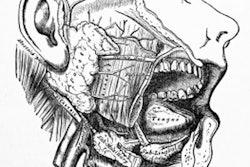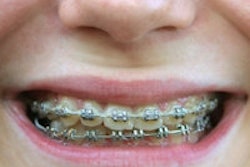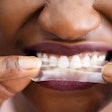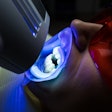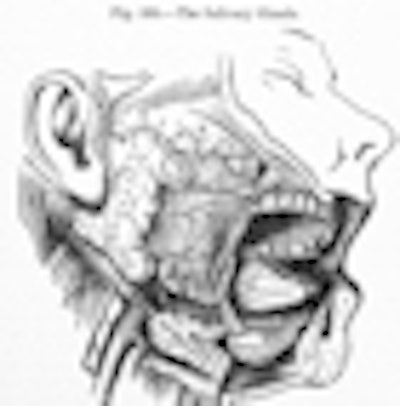
Research has shown that cancer patients on bisphosphonates are at risk of developing osteonecrosis of the jaw (ONJ) and that those on the intravenous form of the drug are at a higher risk compared with those on the oral drugs.
However, a new study that looked at cancer patients on zoledronic acid (ZOL) and chemotherapy combined with the antiangiogenic agent bevacizumab (BEV) who underwent a dental exam before starting treatment found that none of them developed ONJ (JADA, May 2011, Vol. 142:5, pp. 506-513).
Researchers from the University of Siena in Italy investigated the incidence of and risk factors for ONJ in patients with metastases to the bone from solid tumors who received ZOL and BEV.
Their study included 59 patients (34 with breast cancer and 25 with non-small cell lung cancer [NSCL]) who received 4 mg of ZOL intravenously every four weeks and 15 mg per kg of BEV every three weeks. The median time the participants received ZOL therapy was 18 months, while the median time participants received BEV therapy was 16 months.
The researchers took several measures to reduce the study participants' risk of developing ONJ, including the following:
- Dental caries and periodontal disease were treated before starting study treatment.
- Mouth rinses with chlorhexidine and local antibiotic agents were administered before baseline oral hygiene.
- Recommendations were made for maintaining good oral hygiene.
- Teeth were extracted at least four weeks before starting ZOL and BEV therapy.
- Invasive dental procedures were avoided during treatment.
- If invasive dental procedures were needed during treatment, ZOL and BEV were readministered after at least four weeks.
All the patients received a dental exam and panoramic x-rays before starting treatment and every three months until the patients died or were lost to follow-up. After a median follow-up period of 19 months, none of the study participants had developed ONJ.
“The number of patients investigated in this study is too low to make meaningful conclusions.”
— Tanja Fehm, MD
"Despite the fact that new and potent antiangiogenic therapies theoretically might enhance the antiangiogenic effects of ZOL on bone tissue, our findings do not indicate a trend of a higher incidence of BRONJ [bisphosphonate-related ONJ] in patients receiving ZOL and BEV," the authors noted. "Nevertheless, evidence showing that antiangiogenesis is the main underlying mechanism of BRONJ still is lacking."
They also noted that the preventive dental measures taken before the start of treatment could have contributed to the fact that none of the participants developed ONJ.
After the baseline dental exam, seven of the study participants needed tooth extractions, which were done before they started taking ZOL and BEV.
The participants avoided undergoing other dentoalveolar surgical procedures while they were receiving treatment, probably owing to the baseline preventive dental examination and the follow-up examinations, indicating that a dental exam prior to therapy can minimize the risk of developing ONJ, the authors noted.
"Although further research is needed, the results of our study suggest that ZOL combined with the antiangiogenic agent BEV does not predispose patients with metastases to the bone from breast and NSCL cancer to ONJ if they undergo a baseline dental examination," they concluded. "Nevertheless, the results of the study must be considered in the context of the follow-up period used in the study and the use of the preventive dental protocol."
Tanja Fehm, MD, from the department of obstetrics and gynecology at the University of Tübingen in Germany, has done similar research (Gynecologic Oncology, March 2009, Vol. 112:3, pp. 605-609). She told DrBicuspid.com that the incidence of ONJ is low -- between 1% and 4% -- in metastatic breast cancer patients receiving bisphosphonates.
"Therefore, the number of patients (59) investigated in this study is too low to make meaningful conclusions," she added. "However, the paper summarizes the preventive measures that can help avoid ONJ."
James Berenson, MD, from the Institute for Myeloma & Bone Cancer Research has also done similar research (American Journal of Hematology, January 2011, Vol. 86:1, pp. 25-30) and agreed that this study was too small. He also felt the follow-up period was too short for any conclusive results.
Meanwhile, the study authors hope that these results help general dentists, oral surgeons, and oncologists in their efforts to prevent ONJ and identify at-risk patients by means of careful baseline and follow-up dental examinations.




